Plant Experiments: Colored Carnations and Slurping Celery
ED has been learning about plants this past week or two. We talked about the various parts of the plant and then read a bit in our science books about the function of the stem (and trunk) of plants. We revisited an experiment we did 2 1/2 years ago — the celery slurping experiment — as I called it then! This time I bought a bunch of carnations to experiment with as well.
We read how plants can be classified into vascular plants that have tubes and non-vascular plants that do not. Our experiment showed how stem tubes help transport water and nutrients to tubes in a plants’ leaves. Cells that make up the tubes are stiff and this provides support for the plant as its stem grows.
We took a celery stalk and split the celery down the middle. Then we placed each half in containers each with a different color dye. We observed what happened.
We also placed celery stalks in different colors of dye. Finally, we placed white carnation stems in different containers of water with different color dyes. Here’s our whole setup!
We observed what happened over the course of the day and the following two or three days. The celery was especially fascinating. Not only did the dye go to different parts of the celery stalk (in the one where the stem was split in two), but we also peeled the stem back and could actually see the bright blue tubes that were transporting the water!
The blue dye definitely made the biggest visible change to the celery stalks.
We found it fascinating that the color was transported right to the edge of the carnation’s flower petals. The kids loved watching what happened to “their” flowers!
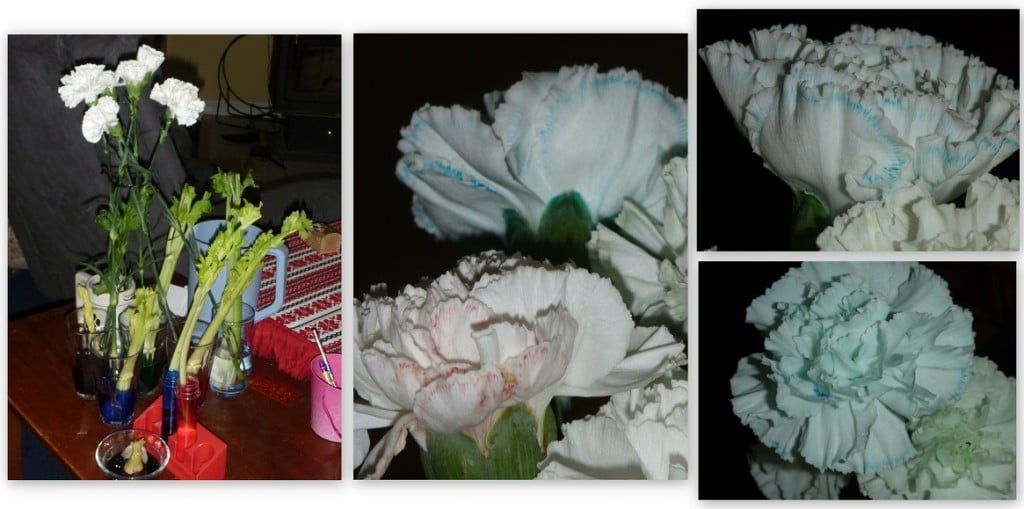
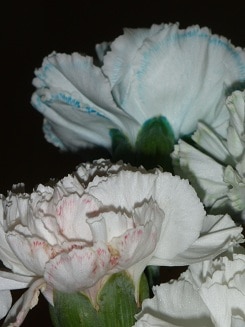
Here are some other pictures from our celery experiment:
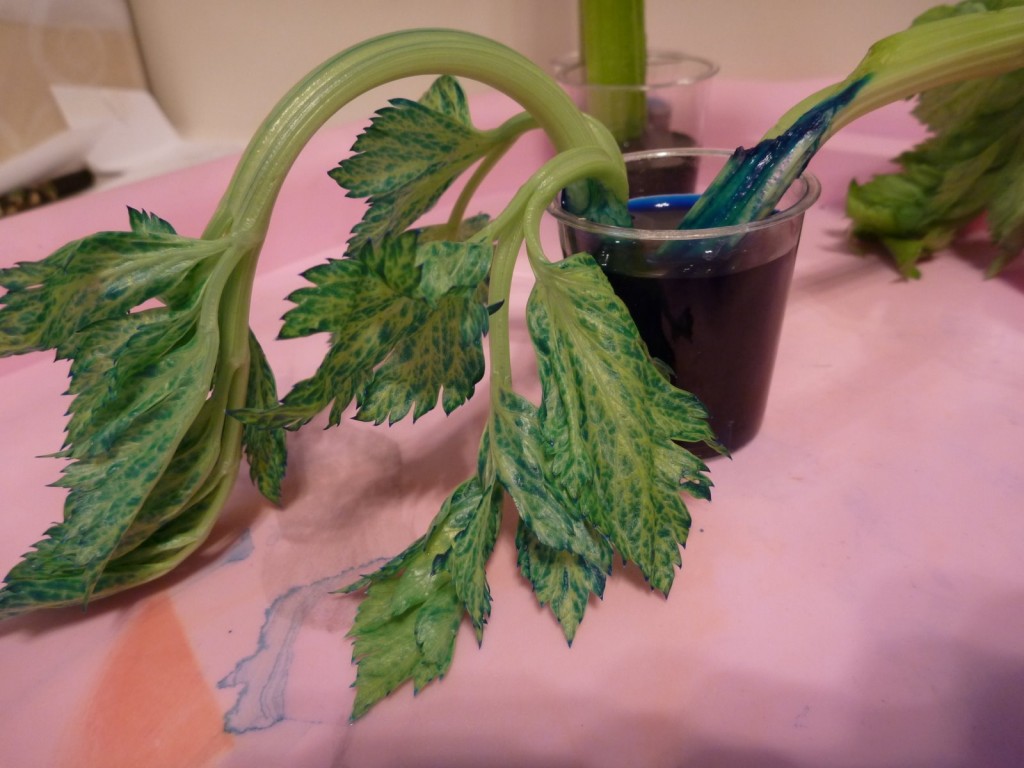
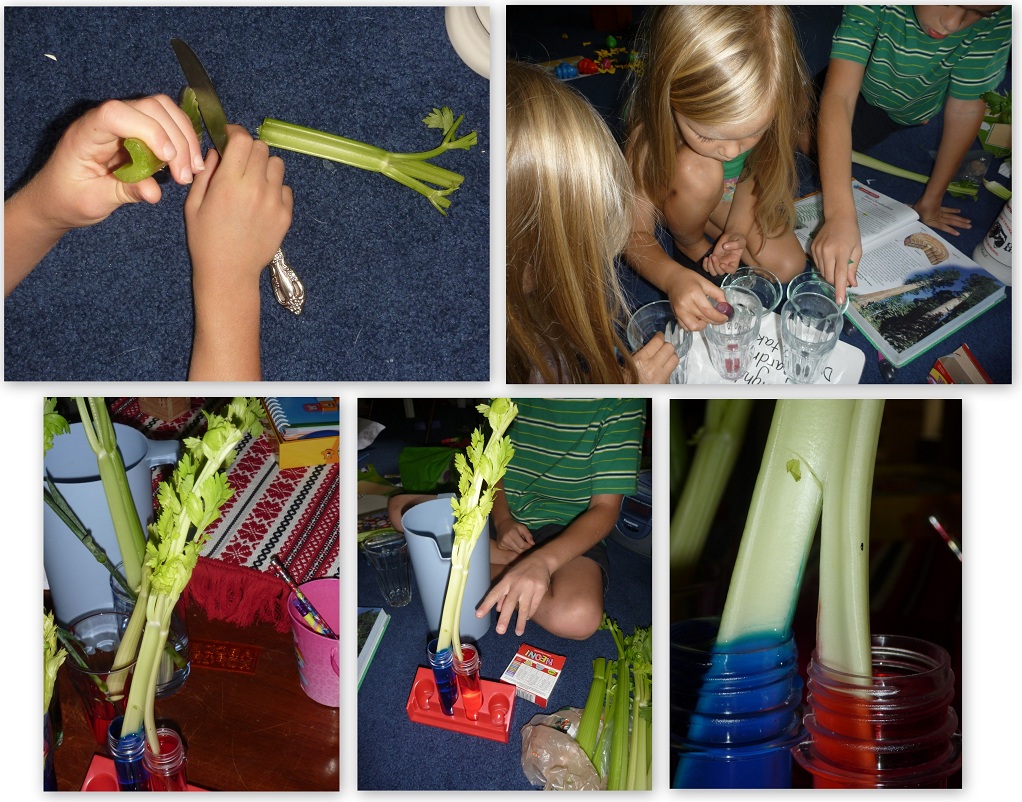
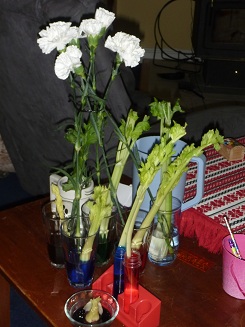

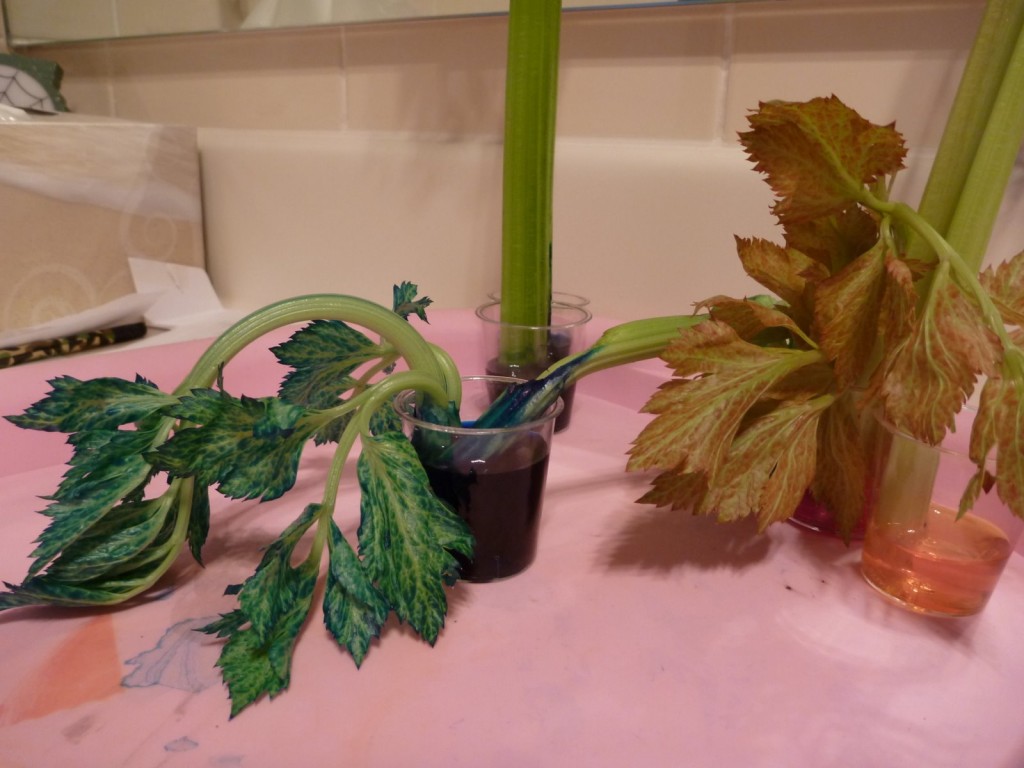






















































2 Responses
[…] parts of plant, plant life cycles, fruits and vegetables, germinating seeds, edible plants, plant nutrition (colored carnations and slurping celery) – (plant unit-lots and lots of plant related activities and […]
[…] parts of plant, plant life cycles, fruits and vegetables, germinating seeds, edible plants, plant nutrition (colored carnations and slurping celery) – (plant unit-lots and lots of plant related activities and […]